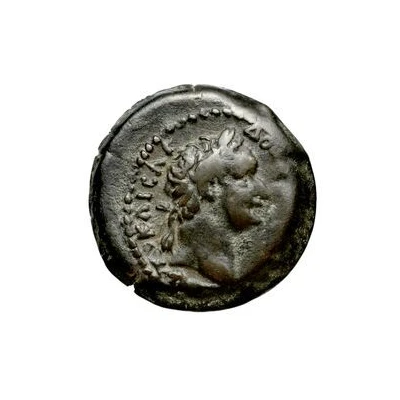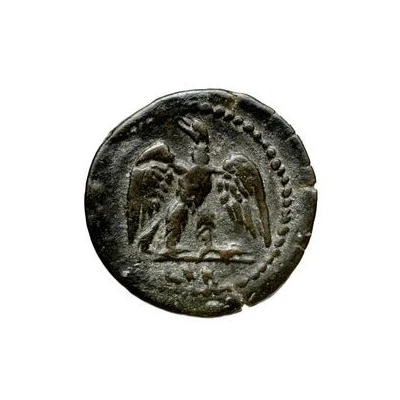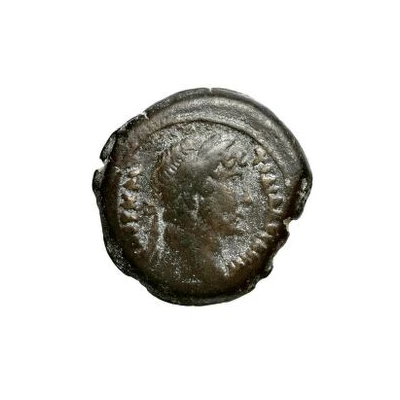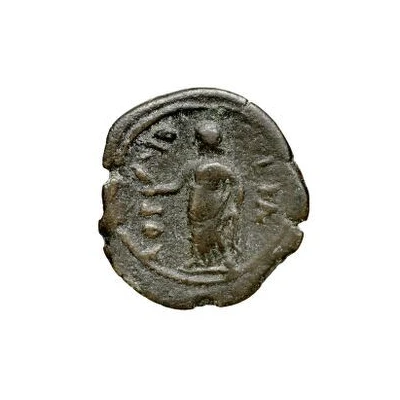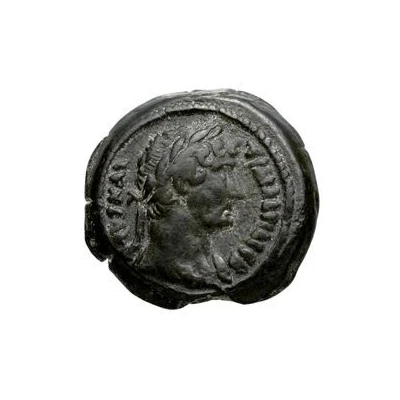
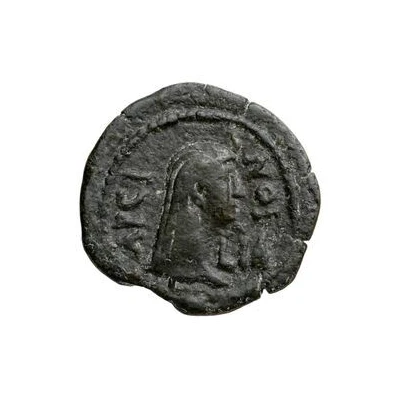

Obol - Hadrian Arsinoite Nome; ΑΡϹΙΝΟΙ, L ΙΑ
| Bronze | 4.53 g | 19.1 mm |
| Issuer | Alexandria (Egypt) |
|---|---|
| Emperor | Hadrian (Publius Aelius Hadrianus) (117-138) |
| Type | Standard circulation coin |
| Years | 126-127 |
| Value | Obol (⅙) |
| Currency | Drachm |
| Composition | Bronze |
| Weight | 4.53 g |
| Diameter | 19.1 mm |
| Shape | Round (irregular) |
| Technique | Hammered |
| Orientation | Medal alignment ↑↑ |
| Demonetized | Yes |
| Updated | 2024-10-06 |
| Numista | N#413534 |
|---|---|
| Rarity index | 97% |
Reverse
Head of Premarres (Amenemhet III), sometimes bearded at chin, right, wearing nemes with uraeus
Script: Greek
Lettering:
ΑΡCΙΝΟΙ
LIA
Comment
This coin forms part of the 'nome coinage', struck under several emperors starting from Domitian and ending with Antoninus Pius. The division of Egypt into nomes (smaller districts) had its roots in the pharaonic administration, but continued to be used in the Graeco-Roman period. On the reverse of the obols struck by Hadrian (probably for the emperor's decennalia), the respective nomes are identified through the legend and a local deity is depicted.
This coin was struck for the Arsinoites, so named by Ptolemy II for his wife and sister Arsinoe II, although the region is better known as the Fayoum today. Ancient life in the Fayoum is particularly well known thanks to the large finds of papyri there. The figure depicted on the reverse is Amenemhat III, an Egyptian pharaoh of the 12th Dynasty, who ruled from circa 1831 to 1786 BCE. This makes him the oldest historical figure to be depicted on an ancient coin. Amenemhat oversaw an important land reclamation project in the Fayoum and at Hawara, a pyramid of his along with the remains of a mortuary temple can still be seen today. This temple complex was known as the 'Labyrinth' in Graeco-Roman Egypt and even formed something of a tourist attraction.
Interesting fact
One interesting fact about this coin is that it features an image of the Roman Emperor Hadrian, who was known for his extensive travels and cultural influences. The coin's design reflects the blending of Roman and Egyptian cultures, as Hadrian was a patron of the arts and sciences, and his reign saw a significant increase in cultural exchange between Egypt and Rome. The coin's bronze material and relatively small weight also speak to the economic and trade practices of the time, as bronze was a widely used material for coinage in the ancient world and the weight of the coin would have been carefully regulated to ensure consistency in trade and commerce.
